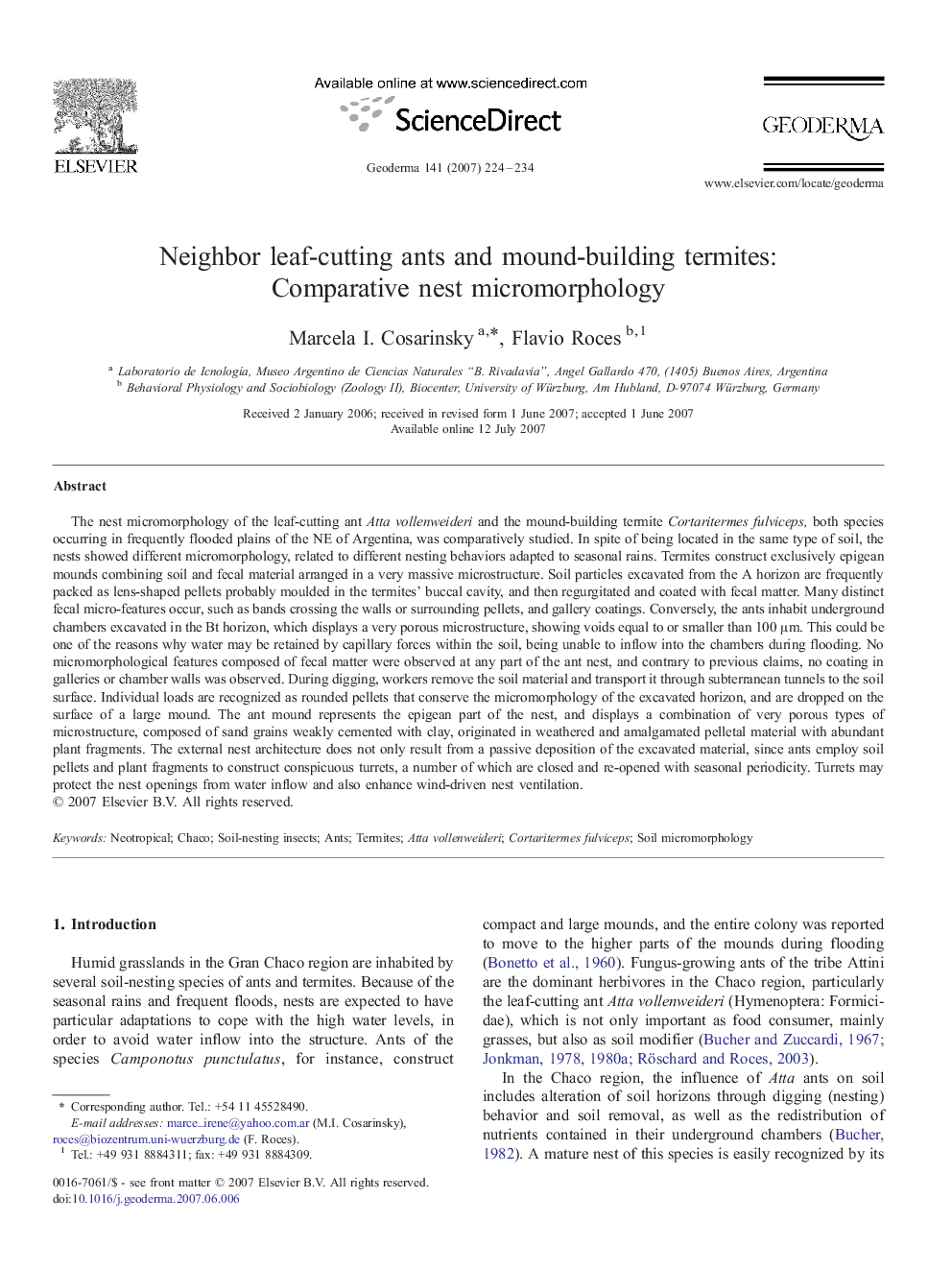| کد مقاله | کد نشریه | سال انتشار | مقاله انگلیسی | نسخه تمام متن |
|---|---|---|---|---|
| 4574915 | 1629550 | 2007 | 11 صفحه PDF | دانلود رایگان |

The nest micromorphology of the leaf-cutting ant Atta vollenweideri and the mound-building termite Cortaritermes fulviceps, both species occurring in frequently flooded plains of the NE of Argentina, was comparatively studied. In spite of being located in the same type of soil, the nests showed different micromorphology, related to different nesting behaviors adapted to seasonal rains. Termites construct exclusively epigean mounds combining soil and fecal material arranged in a very massive microstructure. Soil particles excavated from the A horizon are frequently packed as lens-shaped pellets probably moulded in the termites' buccal cavity, and then regurgitated and coated with fecal matter. Many distinct fecal micro-features occur, such as bands crossing the walls or surrounding pellets, and gallery coatings. Conversely, the ants inhabit underground chambers excavated in the Bt horizon, which displays a very porous microstructure, showing voids equal to or smaller than 100 μm. This could be one of the reasons why water may be retained by capillary forces within the soil, being unable to inflow into the chambers during flooding. No micromorphological features composed of fecal matter were observed at any part of the ant nest, and contrary to previous claims, no coating in galleries or chamber walls was observed. During digging, workers remove the soil material and transport it through subterranean tunnels to the soil surface. Individual loads are recognized as rounded pellets that conserve the micromorphology of the excavated horizon, and are dropped on the surface of a large mound. The ant mound represents the epigean part of the nest, and displays a combination of very porous types of microstructure, composed of sand grains weakly cemented with clay, originated in weathered and amalgamated pelletal material with abundant plant fragments. The external nest architecture does not only result from a passive deposition of the excavated material, since ants employ soil pellets and plant fragments to construct conspicuous turrets, a number of which are closed and re-opened with seasonal periodicity. Turrets may protect the nest openings from water inflow and also enhance wind-driven nest ventilation.
Journal: Geoderma - Volume 141, Issues 3–4, 15 October 2007, Pages 224–234